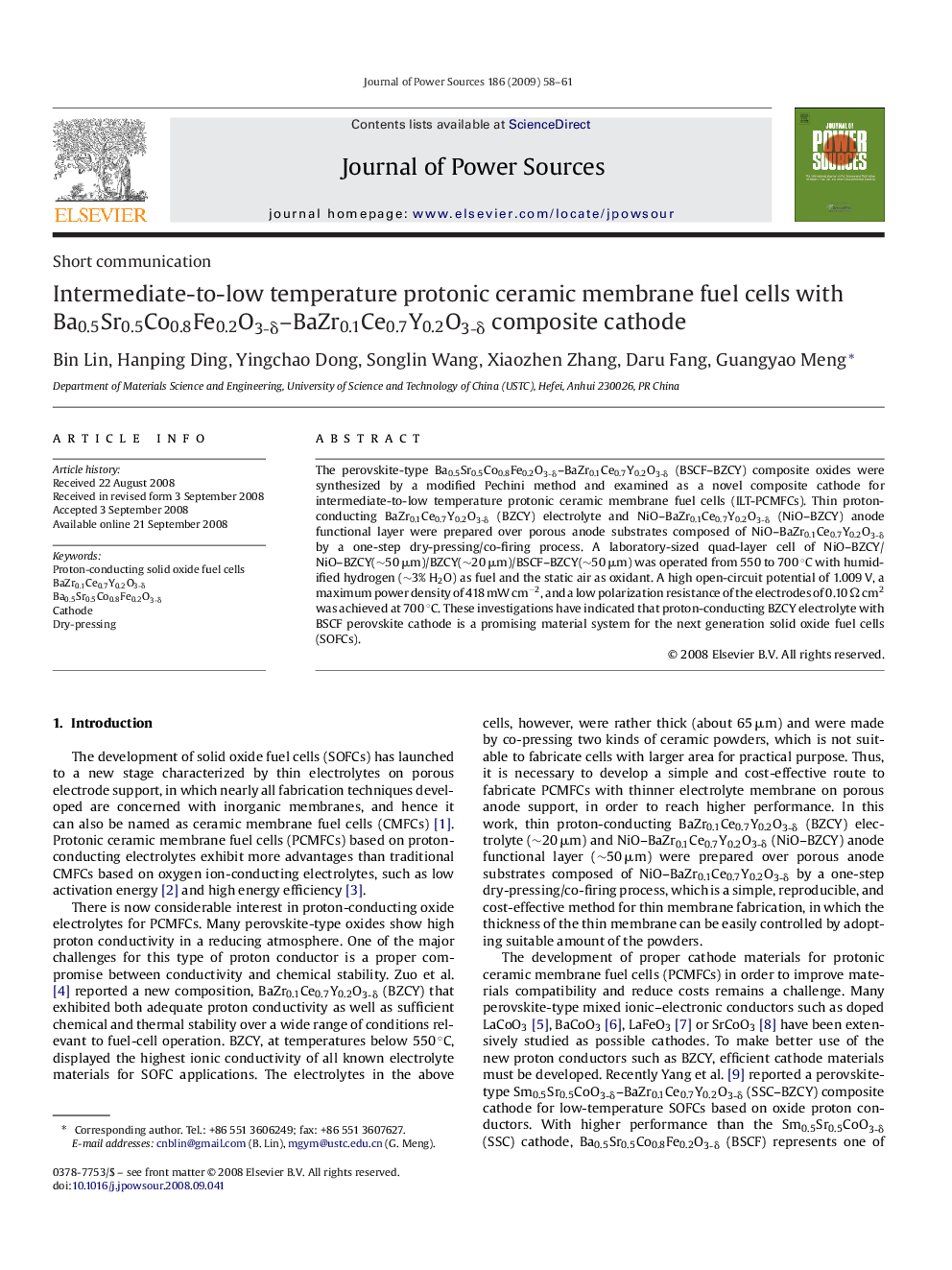| Article ID | Journal | Published Year | Pages | File Type |
|---|---|---|---|---|
| 1289894 | Journal of Power Sources | 2009 | 4 Pages |
The perovskite-type Ba0.5Sr0.5Co0.8Fe0.2O3-δ–BaZr0.1Ce0.7Y0.2O3-δ (BSCF–BZCY) composite oxides were synthesized by a modified Pechini method and examined as a novel composite cathode for intermediate-to-low temperature protonic ceramic membrane fuel cells (ILT-PCMFCs). Thin proton-conducting BaZr0.1Ce0.7Y0.2O3-δ (BZCY) electrolyte and NiO–BaZr0.1Ce0.7Y0.2O3-δ (NiO–BZCY) anode functional layer were prepared over porous anode substrates composed of NiO–BaZr0.1Ce0.7Y0.2O3-δ by a one-step dry-pressing/co-firing process. A laboratory-sized quad-layer cell of NiO–BZCY/NiO–BZCY(∼50 μm)/BZCY(∼20 μm)/BSCF–BZCY(∼50 μm) was operated from 550 to 700 °C with humidified hydrogen (∼3% H2O) as fuel and the static air as oxidant. A high open-circuit potential of 1.009 V, a maximum power density of 418 mW cm−2, and a low polarization resistance of the electrodes of 0.10 Ω cm2 was achieved at 700 °C. These investigations have indicated that proton-conducting BZCY electrolyte with BSCF perovskite cathode is a promising material system for the next generation solid oxide fuel cells (SOFCs).
